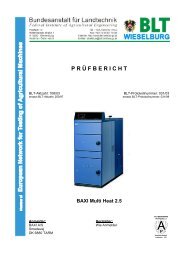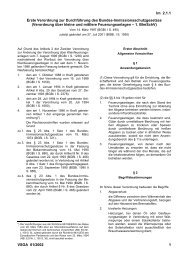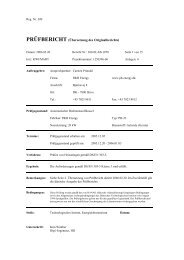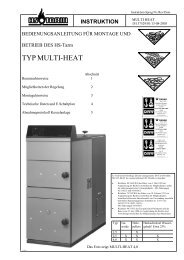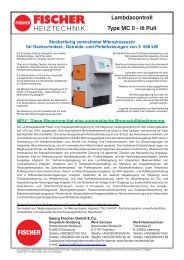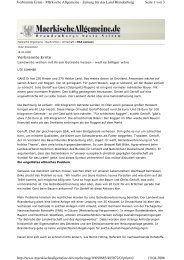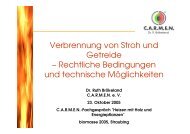Development of 0.5 MWe Scale DeSOX-DeNOX ... - Getreideheizung
Development of 0.5 MWe Scale DeSOX-DeNOX ... - Getreideheizung
Development of 0.5 MWe Scale DeSOX-DeNOX ... - Getreideheizung
Create successful ePaper yourself
Turn your PDF publications into a flip-book with our unique Google optimized e-Paper software.
owing to existence <strong>of</strong> the reverse reaction.<br />
100<br />
DeNOx Rate (%)<br />
80<br />
60<br />
40<br />
20<br />
60 kV<br />
80 kV<br />
90 kV<br />
0<br />
50 100 150 200 250<br />
Pulse Repetition Rate (pps)<br />
Fig 8. Effect <strong>of</strong> peak values and the input energy on NO x removal rate. The<br />
initial NO, NO2, and NOx concentration were 218, 70, and 288 ppm,<br />
respectively.<br />
About 79 % <strong>of</strong> the initial NO X concentration was removed with an energy<br />
consumption <strong>of</strong> 9.23 Wh/Nm 3 . At that time, the pulse repetition rate was 200 pps and<br />
the delivered energy to the reactor was 51 J, 90.32 kV <strong>of</strong> peak voltage and 1.55 kA <strong>of</strong><br />
peak current were measured. With reference to ENEL work [4], the NO X removal was<br />
50 % with initial NO X concentration <strong>of</strong> 240 ppm and about 12 Wh/Nm 3 <strong>of</strong> electrical<br />
energy was supplied to the gas.<br />
IV. Conclusions<br />
We have developed and tested an industrial-scale nonthermal plasma DeSO 2 and<br />
DeNO X pilot plant composed <strong>of</strong> a wire-to-plate type reactor and a MPC type pulse<br />
generator.<br />
As a part <strong>of</strong> energy saving, this paper reported the impedance characteristic and<br />
matching conditions between the pulse generator and the reactor, and showed some test<br />
results for the removal <strong>of</strong> SO 2 and NO X with and without a hydrocarbon additive.<br />
The results <strong>of</strong> the dummy load tests indicated that the output impedance <strong>of</strong> the pulse<br />
generator was about 35 Ω. Matching between a reactor and a pulse generator, the<br />
impedance <strong>of</strong> the reactor should be equal to that <strong>of</strong> the pulse generator when voltage<br />
pulses are applied to the reactor, if possible.<br />
The experimental results obtained at 118 o C show that removal efficiency <strong>of</strong> SO 2 with<br />
a molar ratio <strong>of</strong> 2:1 is 98 % when compared to that <strong>of</strong> SO 2 <strong>of</strong> 8 % without NH 3 . The<br />
addition <strong>of</strong> C 2 H 4 significantly enhanced the performance <strong>of</strong> NO X removal with up to 79<br />
% with an energy consumption <strong>of</strong> 9.23 Wh/Nm 3 . But the removal efficiency <strong>of</strong> NO X<br />
does not increase monotonically.




